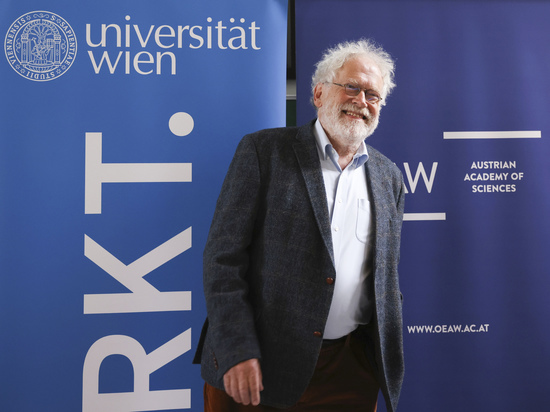Nobel Prize for answering the question “Does God play dice?”
[ad_1]

The winner of the prestigious award in physics became scientists from France, the USA and Austria, who proved the existence of quantum entanglement
Random is not accidental, all uncertain phenomena are somehow predetermined by a system so far unknown to us. Albert Einstein thought so in the 1920s. His friend Niels Bohr was a supporter of the fact that the fundamental uncertainty inherent in the foundation of the world still exists …
The Nobel Prize in Physics, which was awarded on Tuesday to Frenchman Alain Aspe, American John Clauser and Austrian Anton Zeilinger, according to many, puts an end to this long-standing philosophical dispute between the two Nobel laureates. The correspondent of “MK” tried to understand – for what exactly. The head of the national quantum laboratory, Ruslan Yunusov, helped in this.
So, officially the achievement of the international trinity sounds like “Experiments with entangled photons, establishing violations of Bell’s inequalities and innovation in quantum informatics.”
In order to understand what we are talking about, let’s first understand what the quantum world is and why some kind of entanglement sometimes occurs in it. Let’s make a reservation right away that we are talking about effects that are hidden from us – they occur only in the microcosm – in the world of quantum phenomena.
The very concept of entanglement was introduced back in 1935 by Erwin Schrödinger. However, it became widely used only with the advent of the first quantum communication systems and prototypes of quantum computers.
For particles to become connected, or entangled, they must have interacted at some point. For example, they could be formed as a result of the decay of one particle. Even if after this interaction they are separated by any distance, a change in one particle instantly, faster than the speed of light, will entail a change in the other.
Einstein disagreed with quantum theory. In his opinion, the whole world had to obey classical physics, which means that nothing should exceed the speed of light. Therefore, an instantaneous change in the state of a particle that is hundreds or thousands of kilometers away only because of random entanglement is simply impossible.
– The great scientist believed that in order to build a logical picture that explains the changes in particles, there must be some hidden laws, variables that scientists do not yet know about, – explains Ruslan Yunusov. – If we turn to history, we recall the famous words of Albert Einstein regarding the quantum paradox: “God does not play dice.” To this, Niels Bohr, a supporter of quantum mechanics, replied to him: “Einstein, stop telling God what he should do with his dice!”. This dispute in the 60s was reformulated into the language of experiment by the British theorist John Bell. According to his theory, it was possible to check the presence or absence of hidden mechanisms of quantum entanglement using a special formula (it is called Bell’s inequality), which determines whether the predictions of quantum mechanics are probabilistic at a fundamental level, or can be explained by the presence of any unknown (hidden) options.
And here we come to our Nobel laureates, in particular John Clauser and Alan Aspa, who already in the 80s developed the theory of John Bell and experimentally proved that no one and nothing helps particles to get entangled – random interactions are precisely of a fundamental nature.
This is powerful evidence that the laws of quantum physics, which contradict the laws of classical physics, work, and in that distant dispute between the two giant theorists, it was Bohr who was right.
Alain Aspe came to us, in Russia, more than once, gave lectures on his experiments, I know him personally.
As for Anton Zeilinger, he was one of the first to transfer the concept of entanglement into the most practical direction. His group in 1997 for the first time demonstrated the possibility of quantum teleportation – that is, a change in the quantum state of a particle from an entangled pair when the state of another, located at a distance from it, changes. One of the main applications of quantum teleportation is the so-called quantum cryptography, which underlies the architecture of absolutely secure communication systems. The idea behind this technology is that a single photon cannot be cloned. Therefore, we can transmit information in this single photon, and no one will be able to duplicate it, and when trying to do this, the state of the photon will immediately change or collapse. Now the development of quantum communication lines is being carried out all over the world, including here in Russia.
I take this opportunity to congratulate all the winners.
Newspaper headline:
Nobel Prize for Playing with God
[ad_2]
Source link








